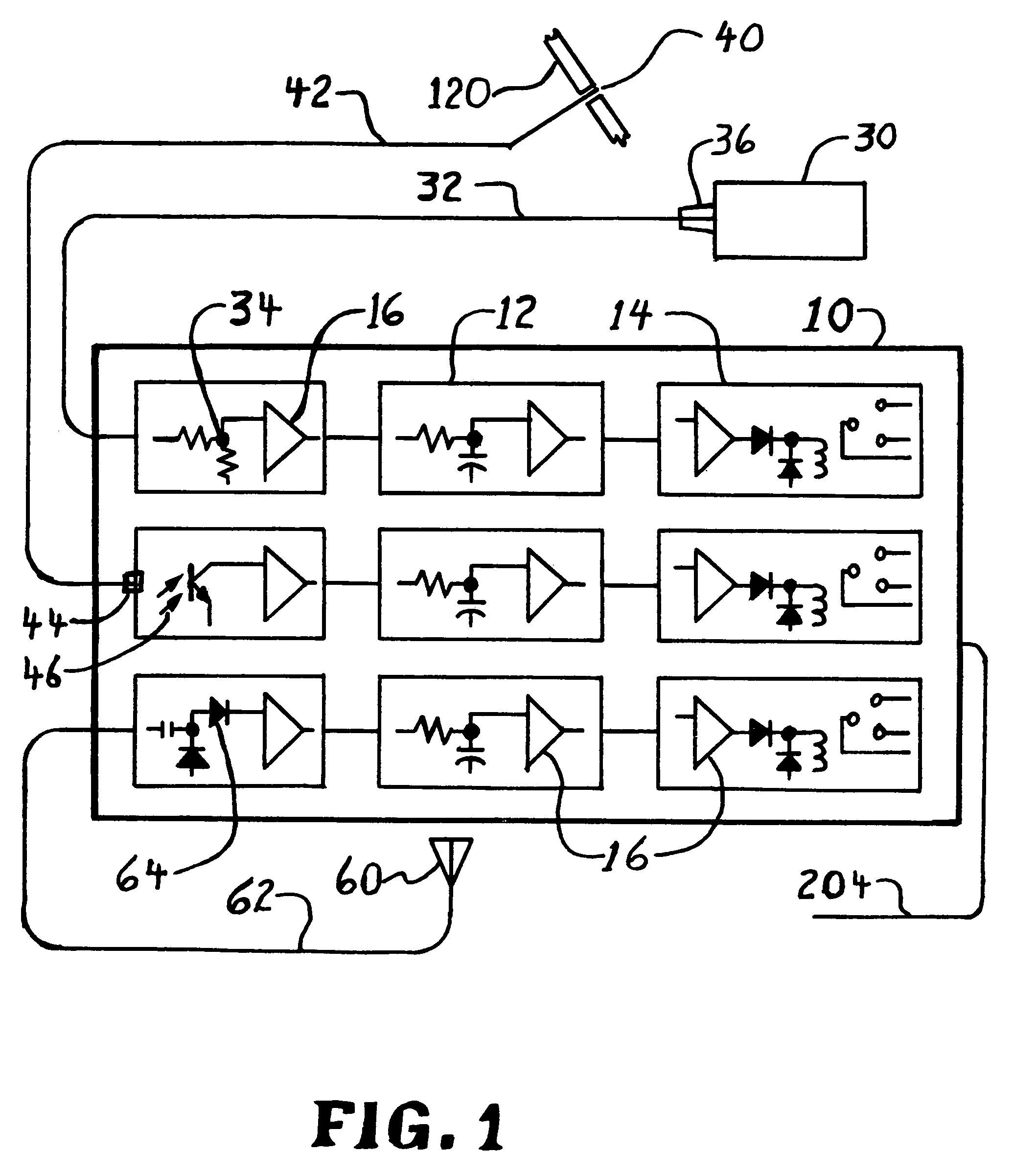Alarm with remote monitor and delay timer
a technology of delay timer and monitor, which is applied in the field of alarms, can solve the problems of accidental or high-cost placement of alarms, misuse of alarms, and compromising the privacy of individuals, and achieves the effects of convenient installation and maintenance, reliable, and flexibl
- Summary
- Abstract
- Description
- Claims
- Application Information
AI Technical Summary
Benefits of technology
Problems solved by technology
Method used
Image
Examples
Embodiment Construction
[0054]FIG. 1 shows a schematic of the alarm apparatus 10. The three features (remote monitors) of this invention are: a light detector using a Fiber optic cable 42, a light sensor 30, and radio detector 64 with a remote antenna 60. Each uses a delay timer 12.
[0055]In a preferred embodiment, the alarm apparatus 10 will contain one or more of the three features. An application may have multiple cases of any one feature. Each feature will have a remote monitor and a delay timer 12, which will drive an isolated alarm output 14.
[0056]In a preferred embodiment, the alarm apparatus 10 monitors ambient light at a remote location and trips the alarm output 14 if the ambient light level drops to a pre determined value for a predetermined length of time. In one embodiment a light sensor 30 monitors the ambient light sending the signal through wiring 32 and / or 36 to the voltage divider 34. The light sensor 30 may be thin and flexible and may be a surface mounted photo-resistor or a solar cell
[0...
PUM
 Login to View More
Login to View More Abstract
Description
Claims
Application Information
 Login to View More
Login to View More - R&D
- Intellectual Property
- Life Sciences
- Materials
- Tech Scout
- Unparalleled Data Quality
- Higher Quality Content
- 60% Fewer Hallucinations
Browse by: Latest US Patents, China's latest patents, Technical Efficacy Thesaurus, Application Domain, Technology Topic, Popular Technical Reports.
© 2025 PatSnap. All rights reserved.Legal|Privacy policy|Modern Slavery Act Transparency Statement|Sitemap|About US| Contact US: help@patsnap.com



